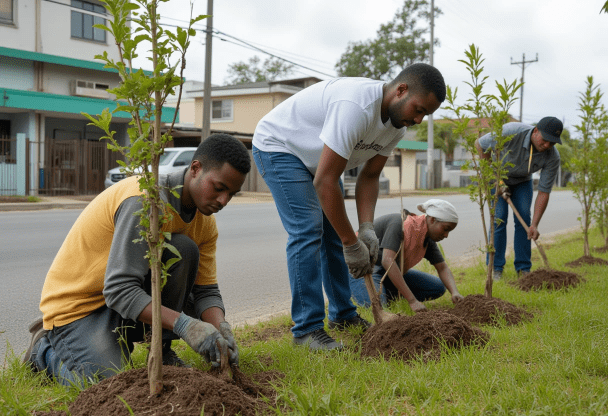3,000 Trees and Counting: Is Jamaica Finally Getting Serious About Green Spaces?

Let’s be honest; when most Jamaicans hear “tree planting” from government lips, we start side-eyeing like we just smell a bad ackee. We’ve grown used to announcements that plant more promises than actual roots. But every now and then, one of these green-sounding declarations turns out to be, well… genuinely green.
Case in point: the government just announced it has successfully planted 3,000 trees along Lady Musgrave Road, East King’s House Road, and Arthur Wint Drive in St. Andrew. Yes, you read that right… three thousand, not three dozen.
Minister Matthew Samuda made the statement at a handover ceremony for a tree relocation device (yes, apparently we now have gadgets for moving trees, welcome to the future, Jamaica). The goal? To compensate for the loss of tree cover due to the major road expansion projects slicing through those areas. And, surprise, the target was not only met but doubled.
Now, before we start clapping with calloused palms, let’s unpack this.
This isn’t just a feel-good photo op for politicians who love a ribbon-cutting. It’s part of the broader National Tree Planting Initiative, an effort to counterbalance the environmental damage caused by development. Think of it as nature’s overdraft protection, you take out concrete and asphalt, you put back foliage and roots. A fair trade, if done right.
But what makes this effort stand out is the proximity of the replanting. These trees weren’t sent off to some remote hillside never to be seen again. They’re within a kilometre of where the damage was done. That’s like knocking down your neighbour’s fence and immediately helping rebuild it, in their yard, not yours.
Minister Samuda also mentioned that Jamaica’s forest cover has increased and that 25% of our terrestrial land is now under protection. That’s not a small feat in a country where land deals move faster than rainfall runoff. And with Long Mountain soon to be declared a reserve, and talks of the Constant Spring Golf Club becoming a forest management area, it seems like someone in government is actually playing the long game.
But let’s keep it real.
This success didn’t sprout overnight. It took assessment, coordination, and actual planting—not planting of ideas, but of roots and trunks and leaves. And that’s where the impact lies. We’ve lost too much to carelessness: mangroves bulldozed for views, trees cut for “development,” and green spaces traded for grey slabs of cement.
So, credit where it’s due: planting 3,000 trees is a win, for the city’s lungs, for aesthetics, and for the future.
Still, we must ask: Will these trees be maintained? Or will they become dry, brittle ghosts along the roadside? Will green space be treated as essential infrastructure, not decoration?
This can’t be a “one and done” campaign. If the same energy that went into planting these 3,000 trees could be applied islandwide, especially in neglected, urban heat islands, then perhaps Jamaica might truly earn the right to call itself “the land of wood and water” again.
So here’s hoping this isn’t just a PR planting season.
Here’s hoping this is roots, real lasting, growing roots.




